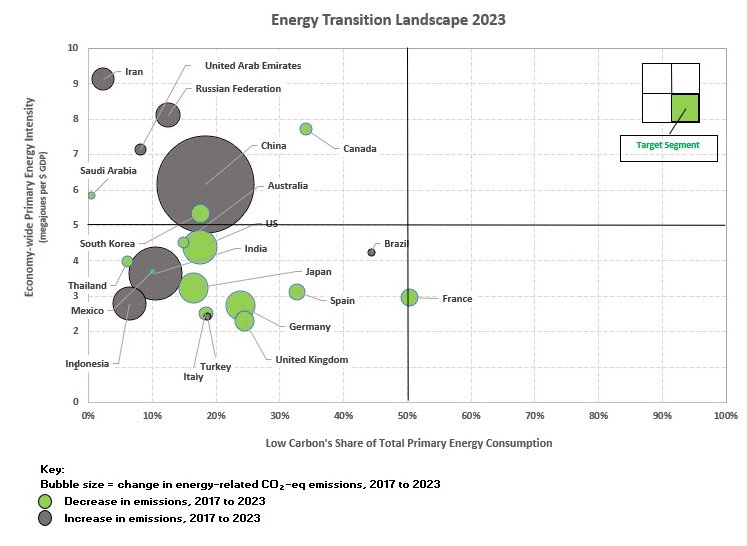The Energy Institute’s Country Transition Tracker, which plots the relative progress of around 80 of the world’s largest energy consuming countries along eight metrics, has been released in advance of ADIPEC in the UAE and COP29 in Azerbaijan later in the month.
The Tracker shows that 42 of the 70 itemised countries have reduced their CO2e emissions since 2017, the first full year after the Paris Agreement was ratified, but during this time, China increased its emissions by 2122 mtCO2e, greater than the combined reduction of these 42 countries (1533 mtCO2e).
Of the 20 highest energy consuming countries, Germany has decreased its emissions the most since 2017, by 24 per cent following the war in Ukraine. Yet there is a degree of ‘offshoring’ emission as developed economies, particularly in Europe, have effectively shifted the emissions to other countries (China in particular) through reliance on overseas manufacturing.
Fossil fuel consumption analysed shows that 50 out of 79 countries have reduced their consumption. Ukraine saw the largest percentage decrease due primarily to the impact of the conflict, but Germany has decreased the most in absolute terms.
In terms of renewable energy consumption (including hydro), China increased its renewable energy consumption the most, in percentage terms it was Oman with a huge hundred-fold increase due to an extremely low starting point.
France had the most decarbonised power system globally with over 90 per cent of power generated from low-carbon sources, primarily nuclear energy, whilst India had the least decarbonised power system.
The Statistical Review of World Energy covers around 80 of the world’s largest energy consuming countries, representing more than 96 percent of global energy consumption and 95 per cent of global emissions.
© 2019 Perspective Publishing Privacy & Cookies








Recent Stories